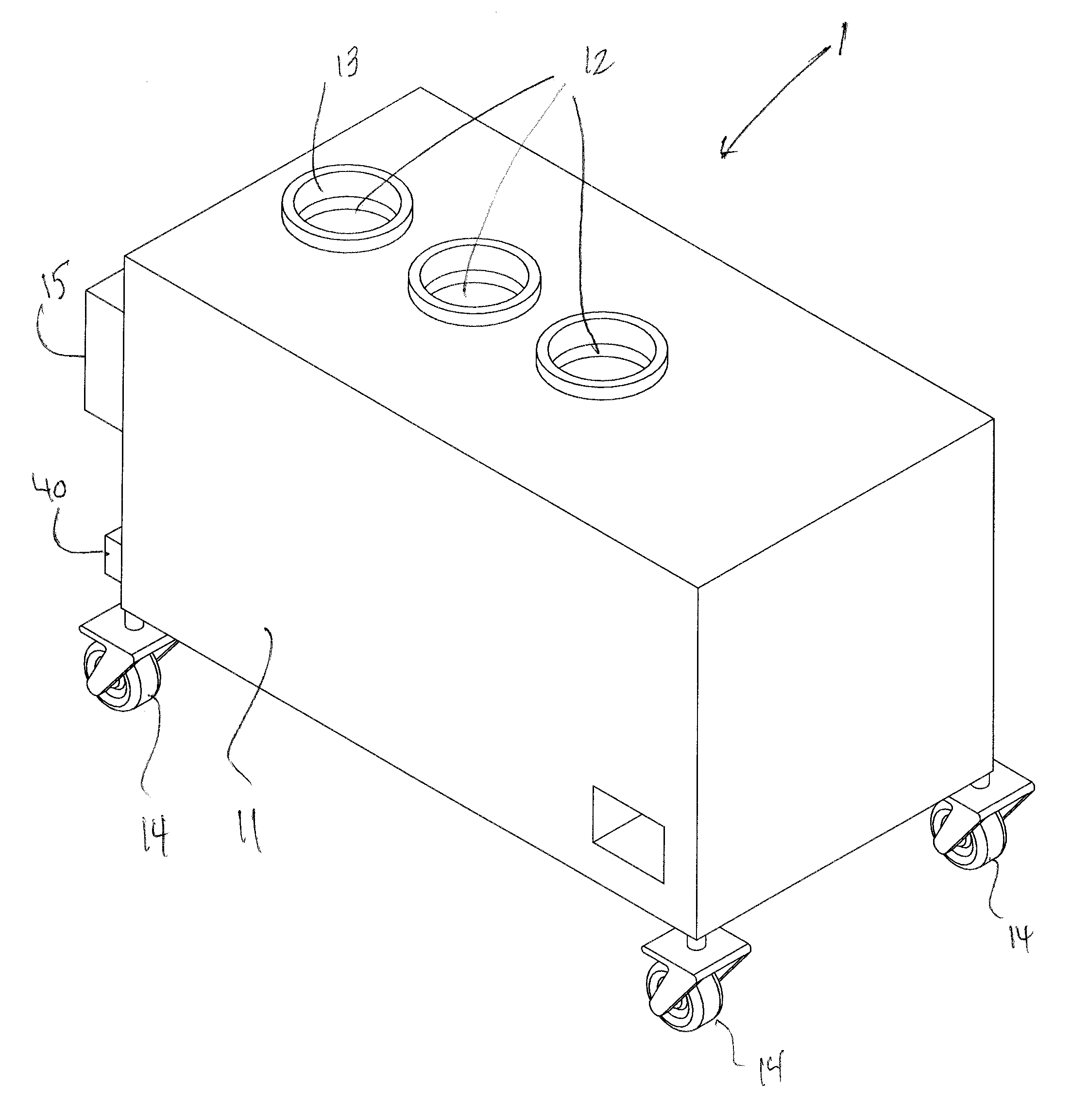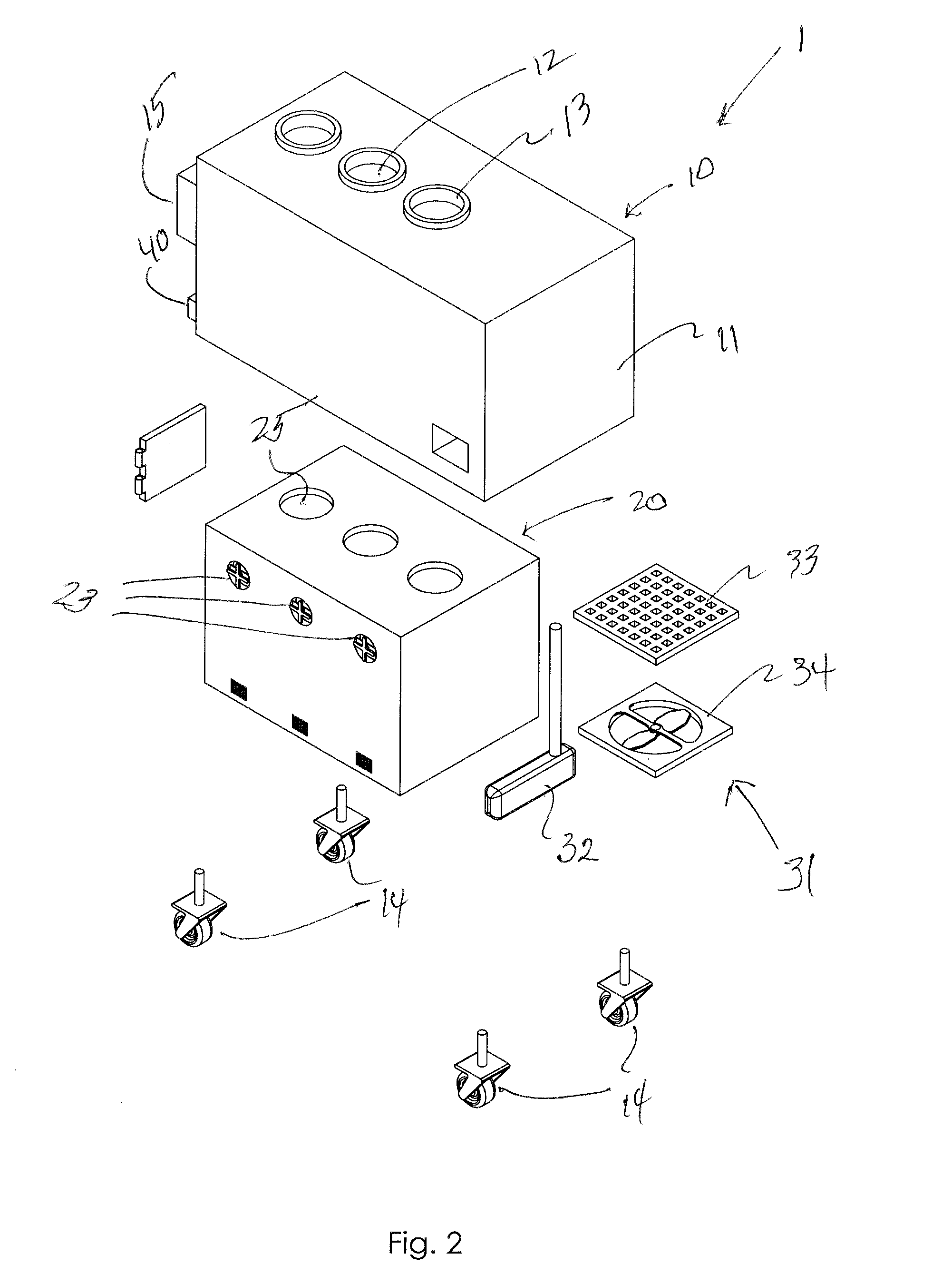Some modify various old refrigerators or freezers striving for
temperature control with limited success.
Most end up at
room temperature with runaway fermentations dependent on
yeast strain and temperature, (Ref Coopers) and lack secondary or other
temperature sensitive processes, thus limiting the range of products due to an inability to process products at required temperature specifications and thus creating unwanted flavors and nuances.
The weight of beverage makes movement to other environments difficult in either size.
Couple these requirements to an
end user, using a mish mash collection of equipment; inability to control environment; inability to produce
multi variable environments simultaneously; lacking the equipment leads to methodology mistakes, even if they know, they lack the equipment to process formulations correctly.
This void results in unsatisfactory alcoholic or non-alcoholic beverages and drinks.
Users commonly experience a lack of proper equipment to facilitate multi-environment functionality and, hence, ther poor results.
With the inability to control each environment to formulation requirements, the control of
yeast or blending process is lost.
Lack of control leads to creation of undesired properties in the beverage, they experience the inability to process most beverages.
The inability to easily maintain environmental conditions required for beverage.
Inability to process products requiring low temperature, inability for multi temperature environments, inability to hold maturation environments.
Inability to complete final
filtration environment, inability to create conditioning environments, inability for packaging environments, inability for serving environments.
The inability to create required environmental components to accommodate various beverage formulations.
Current personal equipment that is used to process Alcoholic and
Non Alcoholic beverages all lend themselves to similar problems, leaving the
end user perplexed and unsatisfied.
It is understood that current equipment cannot create proper environments for blending or
fermentation and is inadequate to produce various high quality Alcoholic and None Alcoholic beverages and drinks.
Personal equipment that is available today is incapable of multi-environment methodology and support functions.
It is inadequate for production of quality alcoholic and
non alcoholic beverages and drinks because the user cannot achieve or maintain formulation environments to 1) ferment various beverages, 2) condition beverages, 3) blend beverages, 4) cold filter beverages, 5) age beverages, 6) serve temperature for beverages, 7) establish a packaging environment.
Without the ability to create environments required by formulation, the end products often have poor
flavor, prevalent flavors are offensive, have an undesirable
odor, are too sweet, are cloudy, have no
carbonation, offer a weak blend of ingredients, are not emulsified, or have digestive side effects.
Inadequate packaging and storage result in additional spoilage.
It is understandable that these methods are inadequate due to the temperature and time requirements and related
specific gravity of an average
fermentation of alcoholic beverages.
As diligent as an
end user is, they cannot achieve high quality results without processes taking place in required environments inclusive of atmospheres.
To produce high quality alcoholic or non-alcoholic beverages and drinks, the ability to intermix with additional processing techniques such as maturation,
ageing, conditioning, cold
filtration, CO2 adjustment and additional processes required are unattainable for most personal users.
The use of certain prior art products such as Apparatus For
Brewing Beer: Toshiba Corp., JPH10313848 (A), 1998 Dec. 2, along with Home Brew Fermenter
System And Apparatus; Coopers Brewery Limited, WO2010 / 130012 A1, 2010 Nov. 18, and their associated prior art do address some improvement; however, these type of systems do not address major processes that have to be done in different environments in order to produce a variety of quality products.
The prior art also does not address the issue of product production flow or outside packaging.
The beverage or drink goes into aggressive
yeast fermentation causing excessive foam which is contained by inner sleeve extending itself upwards containing the foam produced by the rapid conversion of sugars at high temperatures.
This is, in most instances, responsible for producing off flavored additional byproducts and, in general, very
poor quality results also lacking multi environmental and atmospheric control.
Addressing processing problems and protocol
Brewing Alcoholic Beverages and Apparatus Therefor: Ward, John R, Canadian Patent 1196589 (A), 1985 Nov. 12, while resolving problems of prior art the apparatus itself created insurmountable problems for the personal user.
This level of resources far exceeds personal consumption requirements and legalities, and can cost in the millions to set up.
Movement of beverages is awkward,
time consuming and can require multi environments being created dependent on process.
The current file of home brew fermenter systems by Coopers Brewery Limited, WO2010 / 130012A1, still exhibits an inability to achieve and maintain all required environments for complete processing.
This results in off flavors and lacks final conditioning /
carbonization and results in high spoilage of product.
The ability of the prior art to process beer,
wine, alcoholic beverages,
non alcoholic beverages and drinks is most certainly limited if not impossible for users to attain anticipated results.
The end user is frustrated with a lack of results and soon loses interest in processing his own beverages.
The void in home processing apparatuses leaves the individual unable to produce quality beverages and will tend to purchase such beverages from commercial suppliers.
Numerous problems are created with the lack of environmental control being applied to the required formulation.
 Login to View More
Login to View More  Login to View More
Login to View More 


